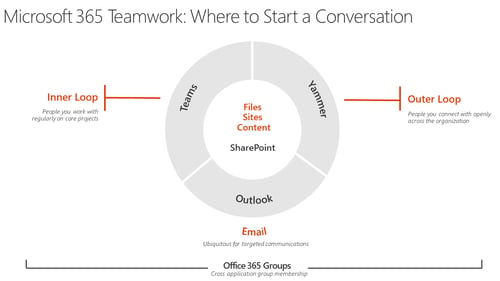Lately, I have been seeing an increase in what feels like anti-meeting content. While the point may be to highlight other methods of communication rather than scheduling a meeting, we shouldn't dismiss or put a negative connotation on meetings. I feel we need a reminder of communication fundamentals. A "checklist" of sorts we can utilize to ensure we are delivering effective and clear messages. In this process, we can choose the appropriate channel or medium to best communicate with our coworkers and, as a result, hopefully, reduce the feeling of meeting overload.
1. Sender & Recipient
This seems simple and almost silly to mention, but communication begins with a sender wanting or needing to communicate something to a recipient. Let's dive a little deeper into the weeds.
Who is the sender of the message? This is something the recipient will want to know and will play a big part in how that message is received. If communication is delivered to a group from an unknown source, that message may be overlooked or outright ignored. Are introductions from a known source necessary to grab the attention of the recipient?
What is the position of the sender? Is it one of authority, or is it from a colleague? Again, this is something to keep in mind. When sending communications, a friendly message from someone in authority will likely be received differently from a colleague.
In addition, we need to understand to whom we are delivering the message. In other words, who makes up the audience (the recipient)? Take into account information such as:
- Demographics (age, occupation(s), location(s), educational level(s), etc)
- How the individual or group typically digests information
- Is the audience already familiar with the topic being addressed
- Are members solely inside your organization or could it be a mix
- What variables compete for the audience's attention
- Like an already packed meeting schedule
We can take appropriate action, so the message delivered is received the way the sender intended.
2. Message
What are you trying to communicate to this audience? To ensure that you are delivering a clear message, I advise starting with an outline that takes into account the following:
- Overall objective
- The desired action, if any
- The desired result
Remember to include necessary details such as dates, deadlines, and any desired action item that can lead towards a follow-up - if needed.
3. Language (or code)
You have your message and have studied your intended audience. If you captured accurate demographic knowledge about your audience, you would know if all of the intended recipients "speak the same language." In addition, you will also know if an additional explanation is necessary for certain members of the audience based upon their basic understanding of the subject matter.
4. Channel and Medium
This is where tech comes into play. The question that the team at PAIT Group often hears is "When do we use what tool?" and the ultimate answer is often "It depends."
Again, I urge you to go back to the information you have on hand about your audience. This will play a factor in how they will interact and/or receive your message.
Other factors to consider:
- Is this message part of day-to-day interaction?
- Then send a chat or message within a Team.
- Do you want to start a discussion with the purpose of discovery and to gather feedback?
- Then encourage your audience to join the Team or Yammer community, so they take part in the conversation.
- Can this be asynchronous, or does it need to be more of a round-table discussion?
Don't forget that in all of these instances, including links to supportive documentation, such as files or Stream video, will provide additional and informative background to your audience.

For more on this subject of when to use what communication tool have a look at this JoyofSharePoint webinar:
5. Feedback
Your message has gone out into the world to your recipient(s). Was the message received the way you intended? If so, Kudos!! However, that is not usually the case and try not to get frustrated. Communication can be challenging at times. Go back and, as the shampoo bottle instructions say, Rinse and Repeat. Also, consider these items in your additional rounds:
- Does the message make clear what the desired response is?
- Did you leave out any recipients that should have been originally included?
- Were there too many scheduling conflicts?
- What about language barriers?
- What would you like to see additional information on or a repeat of?
Before you start drafting that message, work through these communication basics. It will go a long way in making sure you deliver a clear message to the right audience, using the best delivery methods possible.
If your organization has recently adopted Microsoft 365 and is looking to schedule some training or possibly how to best utilize the tools inside the productivity suite, contact the team at PAIT Group; we can help.
